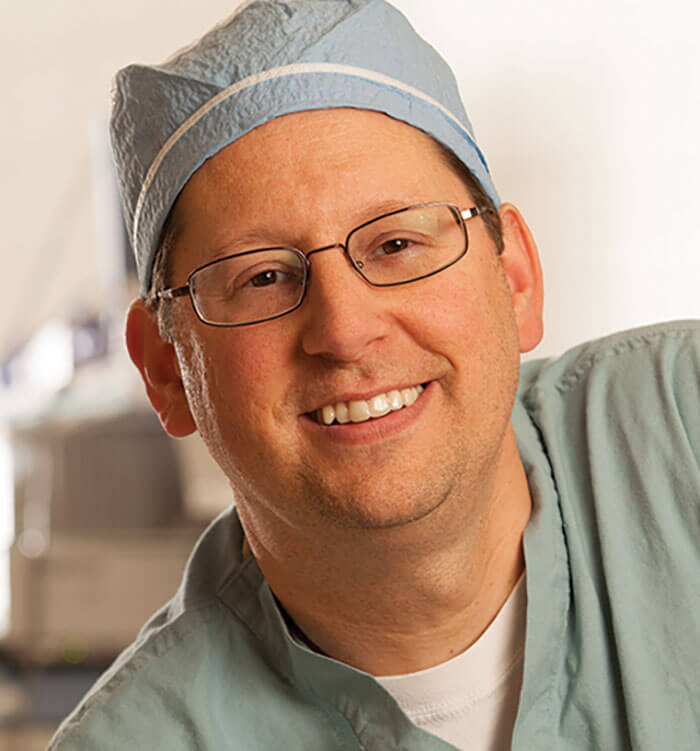UH’s Orthopaedic Oncologist Places a Premium on Access
May 22, 2019
Patients referred to Dr. Patrick Getty are seen the next clinic day
UH Clinical Update | May 2019
As the only physician within the UH system specializing orthopaedic tumors, Patrick Getty, MD, says he feels a special responsibility to provide patients and families with easy access.
 Patrick Getty, MD
Patrick Getty, MDWhat does that mean in practice? Patients referred to him with a suspicious lump, bump or lesion will be seen the next day he’s in clinic – Tuesday or Thursday. He sees patients at UH Mayfield Village Health Center (Tuesday) and UH Ahuja Medical Center (Thursday) and performs surgery at UH Cleveland Medical Center and UH Ahuja Medical Center.
“If there’s anything worse than having cancer, it’s not knowing whether you have cancer,” he says. “That’s why I have a strict policy about access. I always, always make myself available for those new consultations, whether I already have a full clinic or not.”
Dr. Getty is nearing his 20th year with UH.
“What drew me to UH in the first place was the robust community of medical oncologists, radiation oncologists, pathologists and radiologists, all of whom work in musculoskeletal oncology, and the team-based approach to treatment,” he says. “That has stayed the same over nearly 20 years. What has changed is that the system itself is much larger, which brings in many more patients, as well as community oncologists to work with, which has been very rewarding.”
Dr. Getty earned his medical degree at the University of Chicago Pritzker School of Medicine. He completed residency training in orthopaedic surgery and fellowship training in orthopaedic oncology at the University of Chicago Medical Center. While there, he also completed a research fellowship in orthopaedic surgery.
A paradox of his specialty, Dr. Getty says, is that while the tumors he treats are quite rare, the patient population he treats is quite broad, encompassing the entire lifespan, from young children to older adults.
“I am focused on masses, tumors, lesions of soft tissue and bone in the extremities, both benign and malignant, but my patients are of all ages,” he says. “There are things that are very common in the young that I take care of, other things that are very common during midlife, and a whole set of tumors that are common later in adulthood. It gives me professional satisfaction because I enjoy the different interactions. Taking care of a child with cancer is very different from taking care of an adult with cancer.”
One primary focus in orthopaedic oncology today, Dr. Getty says, is achieving optimal oncologic outcomes while trying to improve functional outcomes.
“About 30 years ago, there was a big transition from amputation to a limb-sparing approach,” he says. “However, even in that era, patients would lose a third to half of the bone, including the joint surface on the end of the bone. What we’re working towards now are more biologic solutions to try to save the joint whenever possible and to keep as much natural biology as possible. The goal is to improve the overall function and long-term durability of the reconstructions that we perform.”
To that end, Dr. Getty is collaborating with Dr. John Sontich from Orthopaedic Trauma Surgery.
“A very exciting new development is to combine my practice with that of Dr. Sontich,” Dr. Getty says. “We are using some of his bone transport techniques to reconstruct bones after resection in a more biologic way to give them a more natural and long-lasting reconstruction.”
Dr. Getty is also involved in orthopaedic oncology research, both at a clinical and more basic science level. He has developed a database of soft tissue sarcoma patients and is examining the effects of radiation form and timing on clinical outcomes.
“On the basic science side, we have a program looking at new therapeutics to try to treat pulmonary micrometastases, which are what patients typically die from in osteosarcoma,” he says. “There is still a gap. Rates of patient survival have been stagnant for about 30 years, so we’re trying to look at new drugs to overcome that gap.”
Above all, Dr. Getty wants his UH colleagues to be able to draw on his expertise when their patients need it. And he wants them to know it will happen in a timely way.
“Our patients who need a biopsy are contacted within 48 hours and offered at least two different biopsy appointments within seven days,” he says. “It’s very important to a patient and their family that they feel we’re working in an efficient manner.”
And he reiterates what he calls his “open door policy.”
“If there is a question on a new diagnosis of a mass or lesion, something people are worried about, I will see them my next clinic day. Period,” he says.
For more information about Dr. Getty or to make a referral, please call 216-844-7200. Or send a Doc Halo message or an email to Patrick.Getty@UHhospitals.org.
Tags: Quality Care


